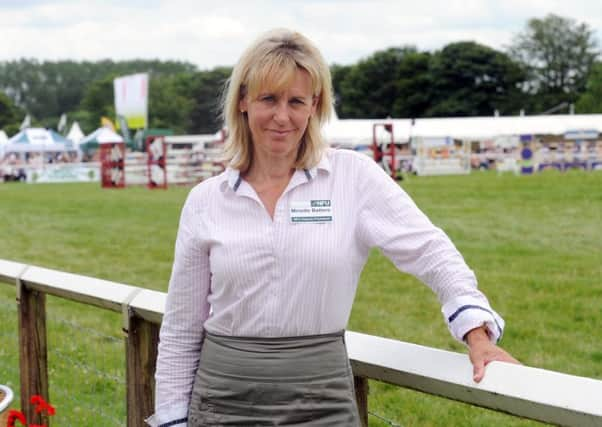Meat needs new image to win back quick-cook shoppers


Minette Batters, deputy president of the National Farmers’ Union, told farmers that the marketing of meat must deliver during what are hugely challenging times for them.
Speaking at the union’s Northern Beef and Lamb Conference at Scotch Corner Hotel, Ms Batter said farmers in the North were suffering from “catastrophic” flooding, amid an existing cash flow crisis caused by months of depressed commodity prices.
Advertisement
Hide AdAdvertisement
Hide AdAmong other pressures specifically affecting livestock farmers, she said, was the huge downward pressure on food prices because of the increased market share of discount retailers Aldi and Lidl, and anti-meat eating campaigns.
“This year more than ever before global influences have made their mark,” she said. “The weak Euro is making exports more difficult and imports cheaper. Blockades in Calais are creating logistical problems, all against a background of economic slowdown, access issues with China and a Russian trade embargo. But we can become more resilient.
“As an industry need to rise above these pressures. We need to explain what we produce and how we manage and contribute towards Britain’s beloved landscape.”
Promotion, marketing and branding of lamb and beef are fundamental to the sector’s future, Ms Batters said.
Advertisement
Hide AdAdvertisement
Hide AdShe added: “Beef and lamb have a lot to learn from the poultry industry. Poultry has realised that differentiating the product has been key to growth - from broiler, to free range, organic, they are giving the consumer choice; a choice to pay for quality and eating experience.
“For far too long we have allowed beef and lamb to be commoditised by some processors and retailers - beef is beef, lamb is lamb - wherever possible we need to be looking at adding value to our meat, it is a premium, slow maturing quality protein.”
The government was criticised last year for failing to sign off a major marketing campaign led by levy payers’ group AHDB Beef and Lamb, against the wishes of farmers, and Ms Batters said she would be holding talks with AHDB chairman Peter Kendall in the coming weeks to ensure levy payers were getting value for money.
Laura Ryan, AHDB Beef and Lamb’s strategy director, who also spoke at today’s conference, explained how the levy body was spending millions of pounds on marketing meat, targeting new ways to promote beef and lamb such as thin steaks for sandwiches and mini-roasts.
Advertisement
Hide AdAdvertisement
Hide AdA £1m TV campaign in November encouraged people to eat beef and lamb midweek rather than reserving it for Sunday roasts, while AHDB is also involved in a three-year 6.5m Euro campaign to promote lamb across EU member states.
FOCUS NEEDS TO BE AT HOME
The export market for British beef and lamb should not be seen as a “panacea” for injecting profitability into the sector, said Jonathan Birnie.
Speaking at today’s NFU conference at Scotch Corner, Mr Birnie, the head of agriculture at meat processor Dunbia, said Britain is only a small global player in the meat export market with Brazil (40 per cent), Australia (28 per cent) and Ireland (10 per cent) dominating much of the world export market for beef.
New overseas markets for British meat will only open up as a result of long-term efforts to build relationships, he said.
Advertisement
Hide AdAdvertisement
Hide AdInstead the focus should be on making the most of the home market, Mr Birnie explained, where British beef and lamb attracts a premium price.
“We need to be clear that the international market isn’t a panacea. It can add value but it isn’t the total solution.”